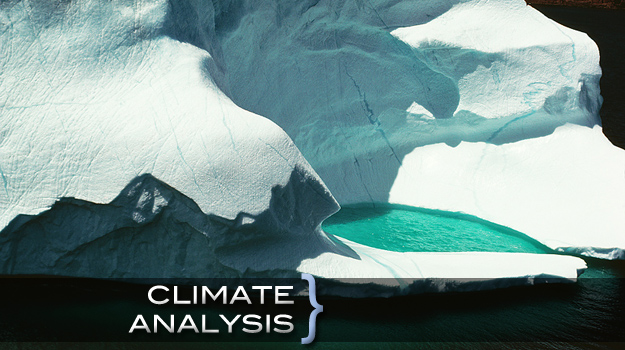Description
Climate analysis has recently focused on differentiating natural variability from anthropogenic climate change. This has spurred detection of the global warming fingerprints in surface temperature and hydroclimate as well as diagnosis of the structure and mechanisms of seasonal and interannual climate variability. Notable examples of the latter include the intriguing seasonal-cycles in the eastern tropical Pacific and Atlantic basins with coldest SSTs in the Northern summer/fall, and the well-known large-scale patterns of recurrent interannual variability El Nino Southern Oscillation, North Atlantic Oscillation, North Pacific Oscillation, and Pacific Decadal variability.
Climate model assessment is a recurring theme: Simulations produced by the state-of-the-art climate system models are scrutinized to assess the realism of the circulation and hydroclimate variability patterns. Representation of the atmospheric water-cycle and extreme hydrologic events (droughts and floods) in both regional and global reanalysis data sets and model simulations is a special focus.
Climate modeling activities target interactions of the climate system components: ocean-atmosphere, atmosphere-land-surface (including vegetation), physical-biochemical (carbon-cycle), and biophysical feedback. Diagnostic modeling is used in investigating the dynamical and thermodynamical interactions occurring in the troposphere and the troposphere-stratosphere region.
Faculty and Appointments
Research Areas
Click through the sections below to learn more about our research areas.
Global Change
- Global warming detection: Trends in sea-ice, snow cover, and climate variability (Vinnikov)
- Seasonal and diurnal cycles of climate trends (Vinnikov)
- Impact of urban and land-use changes on climate trends (Kalnay)
- Estimation of global and regional land-surface temperature trends from AVHRR (Jin)
- Analysis and modeling of climate sensitivity to greenhouse gas concentrations (Lau, Kirk-Davidoff)
- Sampling issues in satellite climate monitoring (Kirk-Davidoff)
- Coupled atmosphere-land-vegetation modeling of Sahelian climate (Lau, Zeng)
- Carbon cycle and climate change: physical-biochemical interactions (Murtugudde, Zeng)
- Bio-climate feedbacks (Murtugudde)
- Earth System Modeling: Past, present, and future climates (Zeng, Murtugudde, Busalacchi)
Atmospheric and Oceanic Reanalyses
- Development of Global and Regional NCEP Reanalyses (Kalnay)
- Ocean Data Assimilation analysis of the global upper ocean 1950-1995 (Carton)
- Diagnosis of 3D diabatic heating from ECMWF & NCEP Reanalyses (Nigam)
Hydroclimate Studies
- Water & energy cycles and land-surface interactions (Arkin, Berbery, Jin, Lau, Nigam, Rasmusson, Ruiz-Barradas)
- Detection and prediction of urban effects on water and energy cycles (Jin)
- Analysis of global soil moisture variability and its remote sensing (Vinnikov, Zeng, Yoon)
- Surface/atmosphere radiative fluxes: Diagnosis; Land/ocean energy budgets and LDAS (Pinker, Berbery, Ruiz-Barradas)
- US Droughts: Initiation, Maintenance, Linkage with Pacific SSTs (Kalnay, Rasmusson, Nigam, Ruiz-Barradas)
- Asian & African Droughts (Zeng, Lau, Pinker, Yoon)
Ocean-Atmosphere Interaction
- Analysis and modeling of ENSO air-sea interactions (Busalacchi, Carton, Murtugudde, Nigam, Rasmusson, Zeng)
- Evolution of eastern tropical Pacific climate: ocean-atmosphere coupling & stratus clouds (Nigam, Murtugudde)
- Analysis/modeling of tropical Atlantic variability (Busalacchi, Carton, Chepurin, Grodsky, Murtugudde, Nigam, Ruiz-Barradas, Zeng)
- Diagnosis and modeling of mid-latitude air-sea interaction (Kalnay, Nigam)
Monsoons
- Dynamical modeling of Asian summer-monsoon variability, including its linkage with ENSO (Lau, Vernekar, Nigam, Zeng, Yoon)
- Mesoscale and multiscale modeling of monsoon systems (Berbery, Fox-Rabinovitz)
- Seasonal evolution and interannual variability of North American and South American Monsoons (Berbery, Nigam, Zeng, Yoon, Lau)
Extratropical Interannual Variability
- Dynamical simulation of seasonal climate anomalies (Joseph, Nigam)
- Structure and dynamics of stormtrack variability (Berbery, Nigam)
- Analysis of North Atlantic Oscillation (NAO) structure and dynamics (Nigam, Joseph)
- Excitation and forcing of PNA and NPO variability (Nigam)
Clouds and Radiation
- Analysis of cloud-radiation interactions (Li, Lau, Lee)
- Remote sensing of clouds, forest fires, aerosols, and the radiation budget (Li)
- Analysis of spectrally resolved infrared radiance from space (Kirk-Davidoff)
NWP methods in Climate Modeling
- Enhanced ocean-atmosphere predictability from coupled breeding (Lyapunov) vectors (Kalnay)
- Modeling regional phenomenon with the Spectral Element Atmospheric Model (Baer, Fournier)
- Devising integration schemes that allow larger time-steps without impacting variability (Baer)
- Hybrid coupled models for tropical climate variability (Murtugudde)
